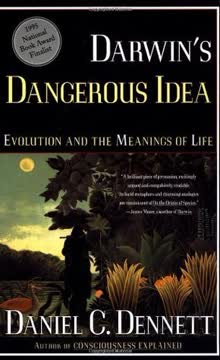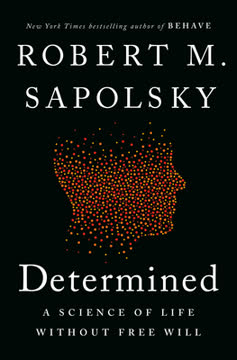Key Takeaways
1. Language reveals the fundamental concepts that structure human thought
"To understand human nature, we need to take a good look at those conceptions."
Mental infrastructure. Language provides a window into the fundamental concepts that structure human thought. By analyzing how we use words and construct sentences, we can uncover the basic building blocks of our mental models. These include our conceptions of substance (things and stuff), space (location and movement), time (duration and sequence), and causality (how events relate to each other).
Universal patterns. While languages differ in their specifics, they share common patterns in how they express these fundamental concepts. This suggests that these concepts are not arbitrary cultural constructions, but reflect universal aspects of human cognition. For example, most languages have ways to distinguish between objects and substances, to indicate spatial relationships, to mark the timing of events, and to express causal relationships.
Cognitive foundations. Understanding these fundamental concepts as they appear in language can provide insights into:
- How we perceive and categorize the world around us
- The basic structure of human reasoning
- The cognitive tools we use to understand abstract ideas
- The limitations and biases in our intuitive understanding of reality
2. Words and syntax reflect our mental models of substance, space, time, and causality
"We dissect nature along lines laid down by our native languages."
Linguistic categories. Our languages carve up the world in specific ways that reflect our mental models:
- Count nouns vs. mass nouns (e.g., "apple" vs. "water") reflect how we distinguish discrete objects from continuous substances
- Spatial prepositions (e.g., "in," "on," "under") encode our basic understanding of spatial relationships
- Tense systems reflect how we conceptualize time and event sequences
- Causal verbs (e.g., "break," "melt," "grow") embody our intuitive theories of how things happen
Cognitive implications. These linguistic categories are not mere arbitrary conventions, but reveal deep-seated ways of thinking:
- They shape how we attend to and remember different aspects of reality
- They influence our judgments and decision-making processes
- They can both enable and constrain our ability to reason about complex phenomena
Cross-linguistic variation. While there are common patterns, languages do differ in how they carve up these domains. These differences can lead to subtle variations in how speakers of different languages think about certain aspects of reality.
3. Verb constructions illuminate how we conceptualize events and actions
"The causative construction also prefers the effect to be an outcome that the actor intended."
Event structure. Verb constructions reveal how we mentally break down events into components:
- Actors and patients (who does what to whom)
- Causes and effects
- Intentions and outcomes
- Manner and result
Semantic constraints. The constraints on how verbs can be used in different constructions reveal fine-grained distinctions in how we conceptualize events:
- Direct vs. indirect causation
- Instantaneous vs. extended actions
- Intended vs. unintended effects
- Changes of state vs. changes of location
Cognitive implications. These linguistic patterns reflect and reinforce our mental models of how events unfold and how actions lead to consequences. They influence:
- How we parse and remember sequences of events
- Our intuitive judgments of causality and responsibility
- Our understanding of intentionality and agency
4. The human mind can frame situations in multiple ways, leading to different linguistic expressions
"The mind has the power to flip between frames that can construe even the most plodding everyday event in more than one way."
Cognitive flexibility. The human mind can construe a single situation in multiple ways, leading to different linguistic expressions. This ability reflects our cognitive flexibility and our capacity for abstract thought.
Linguistic manifestations:
- Alternations in verb constructions (e.g., "load hay onto the wagon" vs. "load the wagon with hay")
- Active vs. passive voice
- Different metaphorical framings of a situation
Implications:
- This flexibility allows us to focus on different aspects of a situation as needed
- It enables creative problem-solving by reframing issues
- It can lead to miscommunication when people frame situations differently
- In politics and rhetoric, different framings can lead to different judgments and decisions
5. Metaphors permeate language and thought, shaping how we understand abstract concepts
"Abstract ideas are connected in a systematic way to more concrete experiences."
Conceptual metaphors. Our understanding of abstract concepts is heavily shaped by metaphors grounded in more concrete, physical experiences. Examples:
- Time as motion through space ("the future is ahead of us")
- Causation as physical force ("the argument compelled me")
- Categories as containers ("outside the box")
Cognitive function. These metaphors are not mere linguistic flourishes, but serve important cognitive functions:
- They allow us to reason about abstract domains using mental tools evolved for physical interaction
- They provide structure for complex, intangible concepts
- They guide our inferences and shape our decision-making
Limitations. While metaphors are powerful cognitive tools, they can also constrain our thinking:
- They can lead us to overlook aspects of a situation that don't fit the metaphor
- Different metaphors can lead to different conclusions about the same situation
- Some metaphors may be more appropriate or useful than others in specific contexts
6. Our intuitive physics, embedded in language, often diverges from scientific understanding
"The intuitive physics embedded in language also contaminates people's physical reasoning."
Folk physics. The way we talk about physical phenomena often reflects an intuitive understanding that differs from scientific models:
- We talk about objects having inherent tendencies to move or stay at rest
- We distinguish qualitatively between "motion" and "rest"
- We often attribute agency or intention to inanimate objects
Cognitive implications. These intuitive models:
- Can lead to systematic errors in reasoning about physical systems
- May interfere with learning scientific concepts
- Persist even in educated adults, influencing their judgments
Scientific thinking. Developing accurate scientific understanding often requires:
- Explicitly recognizing and challenging our intuitive models
- Learning to use more abstract, mathematical representations
- Cultivating the ability to switch between intuitive and scientific modes of thinking
7. Causality in language reflects human goals and intentions more than objective reality
"To label a condition as a 'cause' means to identify a factor that we feel could easily have been different, or that someone could have controlled, or that someone might control in the future."
Anthropocentric causality. Our linguistic expressions of causality are heavily influenced by human concerns:
- We distinguish between "causes" and "conditions" based on what we consider controllable or changeable
- We tend to focus on proximate, intentional causes rather than distant or impersonal ones
- Our causal language often implies moral responsibility
Legal and moral implications. This human-centered view of causality has profound implications for:
- How we assign blame and credit
- Legal concepts of responsibility and liability
- Moral judgments about actions and their consequences
Scientific vs. intuitive causality. There's often a tension between:
- Scientific models of causality, which aim for objectivity and comprehensiveness
- Intuitive and linguistic models, which are selective and goal-oriented
- This tension can lead to misunderstandings and controversies in public discussions of scientific issues
8. The semantics of time in language differs from our scientific understanding of time
"Time, at least as it is expressed in the grammatical machinery of language, also differs from Newtonian time in not being measurable in units."
Linguistic time. The way language encodes time differs from scientific conceptions:
- Tense systems typically divide time into coarse categories (past, present, future)
- Aspect reflects how events unfold over time, but in qualitative rather than quantitative terms
- Time is often metaphorically understood in terms of space
Cognitive implications. Our linguistic encoding of time shapes how we think about temporal relationships:
- It influences how we remember and plan sequences of events
- It affects our intuitive understanding of causality
- It can make certain types of temporal reasoning easier or harder
Scientific time. Developing a scientific understanding of time often requires:
- Learning to think about time in more quantitative, continuous terms
- Recognizing the limitations of our intuitive, linguistically-encoded concepts of time
- Developing new conceptual tools, often mathematical, for reasoning about temporal relationships
9. Linguistic analysis can shed light on moral reasoning and decision-making
"The force-dynamic model in language singles out one entity and conceives of another as impinging on it, whereas in physics neither object in an interaction is privileged."
Moral metaphors. Our moral reasoning often relies on metaphors derived from physical experience:
- Rights and obligations as physical forces
- Moral purity as cleanliness
- Moral judgment as balancing
Framing effects. The way a situation is linguistically framed can significantly influence moral judgments:
- Active vs. passive voice can affect attributions of responsibility
- Metaphorical framings (e.g., crime as a disease vs. crime as a beast) can influence policy preferences
- The choice of verbs can imply different degrees of intentionality or responsibility
Implications for ethics. Understanding these linguistic and cognitive patterns can:
- Help us recognize hidden biases in moral reasoning
- Improve our ability to communicate about ethical issues
- Potentially lead to more consistent and justifiable moral judgments
10. The theory of conceptual metaphor has profound implications but also limitations
"Even if language and thought use metaphors, that doesn't imply that knowledge and truth are obsolete. It may imply that metaphors can objectively and truthfully capture aspects of reality."
Implications. The theory of conceptual metaphor suggests:
- Abstract thought is grounded in physical experience
- Metaphors shape our understanding in fundamental ways
- Different metaphors can lead to different ways of thinking and acting
Limitations. However, the theory has been criticized for:
- Overstating the role of metaphor in thought
- Underestimating people's ability to reason abstractly
- Potentially leading to a form of cognitive relativism
Balanced view. A nuanced understanding recognizes that:
- Metaphors play an important role in thought, but are not the whole story
- People can transcend and critically examine their metaphors
- Some metaphors may be more apt or useful than others for specific purposes
- Metaphorical thinking can coexist with and complement more formal, logical reasoning
Human Behavior Lab Newsletter - Powered by Typeshare
Last updated:
FAQ
What's The Stuff of Thought about?
- Exploration of Language and Thought: Steven Pinker examines how language reflects human nature and cognition, revealing insights into our thoughts, emotions, and social interactions.
- Language as a Window: The book argues that language is not just a communication tool but a window into our understanding of reality, morality, and relationships.
- Conceptual Frameworks: Pinker discusses how mental representations of concepts like causation, time, and space shape our understanding and use of language.
- Focus on Swearing: A significant portion of the book explores swearing, examining its linguistic, emotional, and cultural implications.
Why should I read The Stuff of Thought?
- Engaging and Accessible: Pinker presents complex ideas in a clear and witty manner, making the book enjoyable for a general audience.
- Insight into Human Nature: The book offers valuable insights into how language shapes our thoughts and behaviors, encouraging reflection on language's implications in everyday life.
- Interdisciplinary Approach: Combining linguistics, psychology, and philosophy, the book provides a rich resource for understanding language's role in human cognition.
- Cultural Relevance: Pinker’s exploration of swearing and taboo language is particularly relevant in a world where language is constantly evolving.
What are the key takeaways of The Stuff of Thought?
- Language Reflects Thought: Language choices reveal underlying thoughts and beliefs, providing insights into human nature and social dynamics.
- Swearing is Fundamental: Swearing is a fundamental aspect of language that persists across cultures and neurological conditions, deeply embedded in human nature.
- Metaphor and Meaning: Metaphors shape our understanding of abstract concepts, highlighting the complexity of language and its impact on thought.
- Causality and Names: The book explores how language influences our understanding of causality and the power of names in connecting us to concepts and individuals.
What are the best quotes from The Stuff of Thought and what do they mean?
- “Language is entwined with human life.”: This quote suggests that language is deeply connected to our identity and social existence, crucial for understanding ourselves.
- “Swearing is a window into human nature.”: It highlights how swearing reveals emotional responses and cognitive processes, offering insights into psychological states.
- “Causation is the cement of the universe.”: This emphasizes the importance of causality in understanding the world, suggesting our reasoning relies on grasping cause and effect.
How does Steven Pinker define semantics in The Stuff of Thought?
- Relation of Words to Thoughts: Semantics involves understanding how words relate to thoughts and the meanings they convey, representing reality and influencing perceptions.
- Words and Reality: It is not just about definitions but how words anchor thoughts to the world, crucial for effective communication.
- Community and Language: Semantics also involves the relationship between words and the community that uses them, with meanings evolving through social interactions.
How does The Stuff of Thought address the concept of metaphor?
- Metaphor as a Cognitive Tool: Metaphors help us understand abstract concepts through concrete experiences, enriching language and enhancing communication.
- Pervasiveness of Metaphor: Metaphors are embedded in everyday language and thought, shaping how we conceptualize various aspects of life.
- Examples of Metaphor: Pinker provides examples like “ARGUMENT IS WAR,” illustrating how metaphors influence language and thought processes.
What is the significance of swearing in The Stuff of Thought?
- Emotional Expression: Swearing is a powerful form of emotional expression, often linked to strong feelings of anger, frustration, or surprise.
- Neurological Basis: Swearing is often preserved in cases of aphasia, suggesting a unique neurological pathway distinct from regular speech.
- Cultural Significance: Swearing varies across cultures, reflecting societal norms and values, adding depth to our understanding of offensive language.
How does Pinker explain the persistence of swearing in cases of aphasia?
- Preserved Language Function: Swearing is often retained in individuals with aphasia, indicating it may be neurologically distinct from other speech forms.
- Right Hemisphere Involvement: Swearing may be processed in the right hemisphere, more involved in emotional expression, explaining its retention despite language impairments.
- Cognitive Accessibility: The ability to swear highlights the cognitive accessibility of taboo language, serving as a linguistic outlet for emotional expression.
How does The Stuff of Thought relate language to human nature?
- Language as a Reflection: Language reveals thoughts, emotions, and social dynamics, emphasizing the importance of studying language to understand ourselves.
- Cognitive Processes: Language is intertwined with cognitive processes, indicating that language use reflects mental states.
- Social Interaction: Language functions as a tool for social interaction, shaping relationships and societal structures, highlighting its role in human life.
What role do the basal ganglia play in swearing according to The Stuff of Thought?
- Neurological Function: The basal ganglia are involved in movement and emotional responses, suggesting a connection between motor control and emotional expression in swearing.
- Evidence from Case Studies: Case studies show changes in swearing ability with brain damage, supporting the basal ganglia's role in this aspect of language.
- Implications for Understanding Language: This connection provides insights into the neurological underpinnings of language, intertwining language with emotional and physical responses.
How does The Stuff of Thought explore the evolution of language?
- Language as a Window: Language reflects human evolution, cognitive abilities, and social structures, offering insights into our development.
- Cultural Influences: Cultural changes influence language development, leading to shifts in naming conventions and word usage.
- Metaphorical Evolution: Metaphors evolve over time, adapting to new contexts while retaining core meanings, reflecting cultural and cognitive shifts.
What are the implications of swearing for social interactions as discussed in The Stuff of Thought?
- Social Dynamics: Swearing can express solidarity or aggression, influencing social dynamics and highlighting language's complexity in social contexts.
- Cultural Norms: Acceptability of swearing varies across cultures, reflecting societal norms and values, aiding in navigating social interactions.
- Emotional Release: Swearing serves as an emotional release, allowing expression of frustration or anger, underscoring its therapeutic potential in managing emotions.
Review Summary
The Stuff of Thought explores how language reveals human nature through semantics, metaphors, and cultural expressions. Pinker's linguistic expertise shines, offering insights into cognitive processes and societal norms. While some readers found early chapters challenging, many appreciated the author's wit and depth of knowledge. The book delves into topics like profanity, indirect speech, and the origins of words and names. Critics praised Pinker's ability to make complex concepts accessible, though some felt certain sections were overly verbose or academic.
Language and Human Nature Tetralogy Series
Similar Books
Download PDF
Download EPUB
.epub digital book format is ideal for reading ebooks on phones, tablets, and e-readers.















